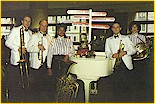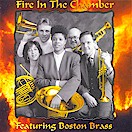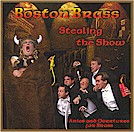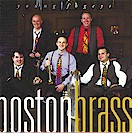|
|
|
 |
|
|
|
|
|
Recording Sessions
|
|
|
|
| Entering
a recording session provided opportunities for learning
and growing, in much the same way as did participating
at competitions. A
commitment was at hand and there were several decisions
to be made, such as these: |
|
|
|
|
What
would be recorded?
How
long should the final recording should be?
How
much would it cost?
What
should it look like?
Who's
going to pay for it?
Where
will we sell it?
|
|
|
|
 |
The
very first recording was totally self-recorded, with
rented sound equipment.
In an effort to save money, considerably more time
was spent dealing with annoying and unfortunate technical
problems with the equipment -- from cable problems that
"magically" added an unwanted humming sound to
recording decks that would not properly work.
It was a wonderful experience even with these
problems.
|
|
|
|
|
|
One
element that always had to be factored into any big plans
like making a recording was each member's weekly schedule.
Getting five schedules to line up enough times in
some sort of close sequence of dates proved almost
impossible. And
then securing the location was another difficulty. This
first recording took place at a church in Marblehead,
Massachusetts, which is a one hour drive from Boston.
|
|
|
|
| This
recording included some of my very first arrangements,
such as the Albeniz "Leyenda"; "My Spirit
Be Joyful" and "Sleepers, Awake", both by
J.S. Bach; a "Suite in D" by G.F. Handel; and
the energetic "Two Courants" of Samuel
Voelckel. Knowing
that our first recording had arrangements that were
exclusively ours made the project seem even more
special. Other
music included three Renaissance dances by Anthony
Holborne, the "Tango" of Albeniz, "Where'er
You Walk" of G.F. Handel, a "Tarantella"
of Mendelssohn, the "Souvenir di Porto Rico"
of Gottschalk and "Three Pieces" by Ludwug
Maurer. |
|
|
|
| One
of the difficulties in making this recording was that we had no means to do any editing or splicing of any
kind, so there were many re-takes.
The single longest selection was the Bach
"Spirit".
On the sixth take -- I was beginning to feel it
by then -- there was some problem near the end of the
piece, so we couldn't use it.
Ouch! Finally
take seven was a keeper (*whew*). |
|
|
|
| That
first recording set the stage and made us more
interested to do another one.
|
|
|
|
| The
second recording was the quintet's first chance to show
something of it's musical versatility. It was called "An American Journey" and included
some of the "pops" arrangements for brass
quintet that were introduced in the mid to late 1980s. |
 |
|
|
|
|
| The
title to this recording was to indicate the various city
and regional names included on several of the musical
selections. "Old
Cape Cod" and "Georgia" were both songs
that had been on many concerts, and now the audiences
would have a permanent copy to take home after the
concert!
|
|
|
|
| These
first two recordings were both fully self-recorded.
While the second one contained no splices within any
continuously playing piece (as was the case on the first
recording), "American Journey" did have a few
edits which occurred at convenient places in the
"pops" suites, where the arrangement itself
actually came to momentary halt -- that's where we took
a time out!
|
|
|
|
| FIRE
IN THE CHAMBER |
|
|
|
 |
For
the third recording the quintet decided that
spending money for an experienced recording
technician was the only way to go.
But that did not prevent there from being
the same kind of scheduling difficulties that
had been there for the earlier sessions.
It was made in 1993, a year after the
Narbonne competition. |
|
|
|
|
| Again
set in a church, the first of three recording sessions
took place in mid-winter, with snow outside.
The later sessions were when it was not as cold
and there was no snow.
There was a noticeable difference in the
acoustics inside the church, but fortunately it did not
affect the tone quality of the recording.
|
|
|
|
| In
addition to a professional engineer, we hired a producer
to be at each session, to listen and comment on the
music and make various helpful suggestions.
That person was Scott Hartman, who was the
trombonist with the Empire Brass.
His input helped further educate the way the
quintet listened and played. |
|
|
|
| With
the advent of the recording engineer, we were now able
to do careful editing.
This made it considerably easier to come up with
a finished product, which had a smooth and even
consistency. There
were several occasions when we were having to choose one
take over another, and the question that came up a few
times was, "Isn't there another take?" |
|
|
|
| STEALING
THE SHOW
|
|
|
|
| When
the recording bug bit again in later 1995, the
quintet's library had grown even more.
In trying to come up with some sort of
"theme" for a CD, we started noticing
all the various oprea arias, overtures, suites,
and operetta collections. It seemed that there was plenty of both familiar and unusual
music from this genre to create an enjoyable
recording. |
 |
|
|
|
|
| By
then we had music by such composers as Bizet, Bernstein,
Purcell, Scarlatti, Lehar, and also by Glinka, Mozart,
Wagner -- and Eichberg? Nobody had heard of him, but everybody enjoyed his
"Overture to The Doctor of Alcantara", a
light-hearted work remiscent of Gilbert and Sullivan.
|
|
|
|
| And
we were back to record in yet another church.
This particular space was an acoustical challenge
-- all stone, with rows and rows of wooden pews.
The first recording session took the most time,
because where we first placed ourselves, in relation to
the microphones and the space of the room, did not
record well at all.
The recording engineer said there were all kinds
of vague and "woofy" qualities.
|
|
|
|
| So we
hunted to find the ideal physical arrangement and the
best possible microphone placement.
In the end, three of us were each standing on one
pew that we moved over against a wall, the French
hornist was standing in a chair, and the tuba player was
sitting on a very tall table-like structure.
It certainly looked odd, but the end resulting
sound was wonderful. |
|
|
|
| So we
hunted to find the ideal physical arrangement and the
best possible microphone placement.
In the end, three of us were each standing on one
pew that we moved over against a wall, the French
hornist was standing in a chair, and the tuba player was
sitting on a very tall table-like structure.
It certainly looked odd, but the end resulting
sound was wonderful. |
|
|
|
| This
undoubtedly was the most exciting recording to date. The sessions were in winter and there were several snowy
nights. A
number of times tempers flared, but then we'd have
sandwiches and the blood sugar level would improve.
To be sure, recording is trying work and, like
competitions, is well worth the effort.
|
|
|
|
| YOUNG
FOGEYS
|
|
|
|
 |
This
recording was the very first time Boston Brass
worked in a recording studio instead of a
church. The
experience of playing in a room with such flat
acoustics, and wearing headphones so as to hear
artificial acoustics, took a little getting used
to. It
was recorded in late 1996. |
|
|
|
|
| The
recording engineer had more buttons, knobs, switches,
lights and gizmos than even airplane cockpit!
As the sessions progressed and Marc (the
engineer) showed us various things we could do, it was
obvious that he was as valuable as any of the members of
the quintet. His
skill, timing and finesse was equal to a fine concert
violinist, and he was in essence the sixth member of the
group for that recording. |
|
|
|
| To
get the proper balance on such big pieces as the Bill
Holman "Maleguena" and Bill Reddie's "Chanel
One Suite", and then shift moods completely for the
darkly evocative theme from "Laura" and the
mysterious " 'Round Midnight ", the engineer
had to be especially attuned to what we were after. |
|
|
|
| Making
a recording of several big band charts was a dream and a
challenge. Since
the quintet had been performing them for quite a while,
the main learning curve was in properly utilizing the
studio itself. |
|
|
|
| The
danger of recording in a studio is including the kind of
acoustical envelope ("reverb") that draws
attention to itself. You know it when you hear it, and it usually always sounds
like "too much".
Luckily, Marc was able to offer a variety of
sounds to choose from, so that each selection had its
own balanced acoustic.
|
|
|
|
| At
the very last recording session, when we were just about
out of studio time (and money), there was discovered
some sort of technical problem with a smaller piece of
equipment. Marc
was baffled.
|
|
|
|
| The
tuba player, Randy, previously had a little experience
with whatever it was that was causing the problem.
So Randy spent easily one hour patiently fiddling
with the "thing", and finally corrected the
problem. We
then recorded "Chanel One Suite" and the
"Fly Me To The Moon".
After that day-long session, we left (again it
was snowing!) and went to some four hour gig.
We were tired after that.
|
|
|
|
|